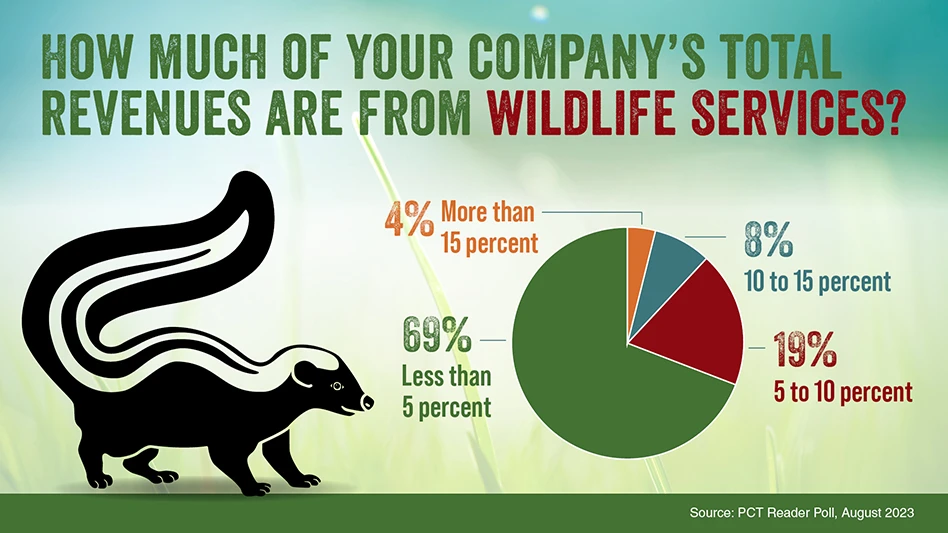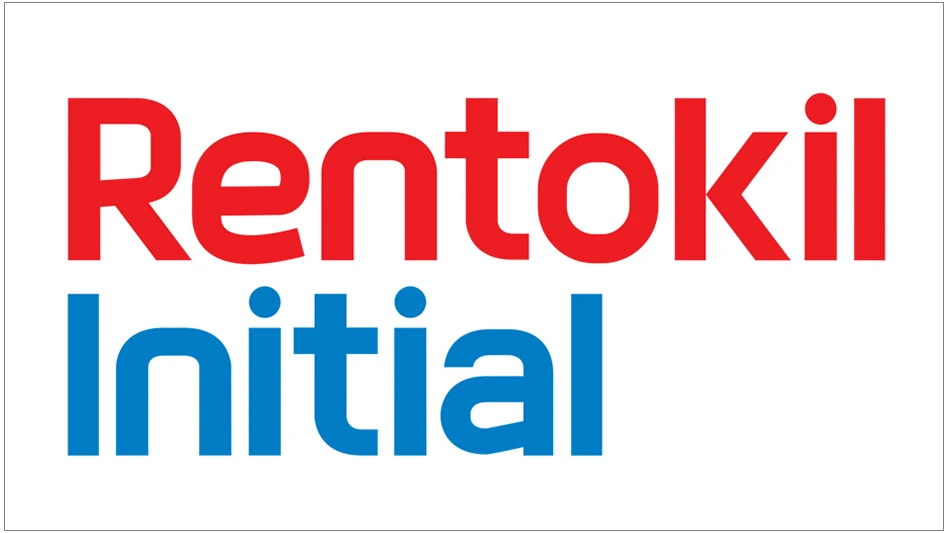
© chrisroosfotografie | Adobestock
CLEVELAND – Many pest management professionals seeking organic growth are reexamining how they sell, service and market wildlife control. Despite many PMPs growing this segment in recent years, it still accounts for a relatively modest amount of their revenue, in comparison to other services, according to a recent PCT Poll.
Sixty-nine percent of those who responded to PCT’s recent poll said less than 5 percent of their yearly revenues are from wildlife services, while another 19 percent said that 5-10 percent of their revenues are from wildlife services.
Modern Exterminating, Columbia, S.C., just launched wildlife as a service last summer. President Glenn Matthews III, said wildlife control accounts for 5-10 percent of his company’s revenues. “We are doing well and growing, but we are having a hard time staffing the department, which limits our overall capacity,” Matthews said.
Matthews added that he likes the wildlife segment, and thinks it works “hand-in-hand with pest control” but “We can only grow if we can hire good staff, and at the moment that is a huge challenge.”
Wildlife control has been a good fit for Cowley’s Services, Farmingdale, N.J. Co-Owner Bill Cowley said wildlife accounts for 10-15 of his company’s revenues. For wildlife control to be done properly and profitably, it “has to be run as a business within your business,” Cowley said. “Separate trucks, techs, supervisors, meetings, training, equipment, and marketing are necessary to grow this business segment.”
One of the things Cowley has learned is that wildlife control needs to have a staff member who “champions this work every day. Whether it's the owner or a high-level executive doesn't matter but someone in the company has to be talking about it, training on it, and living wildlife on a daily basis,” he said.
A pest control that is a bit of an outlier is Wingman Pest Control, South Lyon, Mich. About 60 percent of the company’s business is from wildlife. “Probably because we are good at it, we have the right equipment, and we know how to price it properly to make it worth our while,” said Wingman President Buck Hempel, whose background is wildlife control (he served as manager of wildlife services for Terminix from 2013 to 2017).
Since Wingman is a well-established wildlife control provider, Hempel has been focused on growing general pest control. “Pest and recurring revenue is what gives our industry a value — not one-time wildlife control services, despite them being big ticket [services].”
Hempel cautions pest control companies who are considering getting involved in wildlife and exclusion work. “Wildlife control is way more difficult than pest control,” he said. “[It involves] way more heavy material and is way more dangerous. If I was an established, long-time pest control company I would avoid opening that service line.”
Participate in our latest poll: Is your company seeing more or fewer ladder incidents than it was five years ago?
Latest from Pest Control Technology
- Moving Day for Oriental Cockroaches
- Pest-End Hosts Annual Company Event to Celebrate Growth, Awards Ceremony
- IPMA Announces Doug Foster as 2025 Hall of Fame Award Winner
- Hogarth's Pest Control Using Meta AI Glasses for In-Field Pest Identification
- OcuTrap Uses Remote Monitoring Technology to Improve Capture Rates
- Skedaddle Wildlife Opens Columbus (OH) Franchise Location
- UCCE Orange County Partners with Newport Exterminating to Resolve Mouse Infestation
- Arab Termite & Pest Control Celebrates 50 Years in Business





